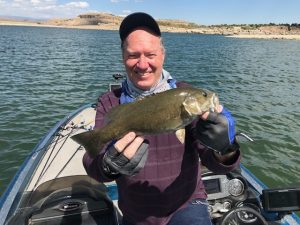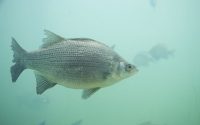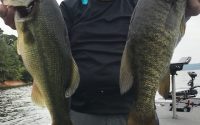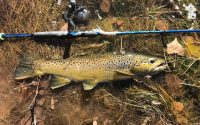Take Advantage of “Skinny” Water
Water levels in most reservoirs in Utah are in free fall with the exception of Flaming Gorge which is holding steady at around 90 percent of full. How can you take advantage of lower water levels and catch quality fish now and in the future?
In Utah, it is inevitable that reservoirs will rise and fall with the seasons. In the spring water levels rise, in summer they stabilize for a short time as the inflows match the outflows. When the run off ends and irrigation or culinary uses peak, the outflows outstrip the inflows in a big way. In the fall and early winter water levels stabilize again but generally at their lowest levels of the year. The cycle repeats itself as winter turns into spring.
Knowing this yearly cycle of water levels, it is crucial to come to grips with these facts:
- We live in a desert.
- We rarely have more water resources than we need.
- We cannot count on stable water levels.
- Fishing takes the back seat to providing water for humans.
Where to Find Fish as Water Levels Drop
It is important to understand that as water levels drop the fish do not have a choice, they must go deeper, find stable conditions, and still be able to ambush, trap or chase prey. They need good water to breathe and their instincts take them to drop offs, the ends of points or anywhere they feel comfortable.
You cannot expect the fish to be in the same places they were just a few weeks ago if water levels are dropping. My dear friend, Jerry Zabriskie, once told me to go to a rock ledge 30 miles north of Bullfrog Marina to find some huge bass. I tried to find “his” ledge but never could locate it. Later that year, Jerry came with me to “show” me where those fish hung out. After looking everywhere without any luck, Jerry looked at me and said, “Do you see that rock ledge up there on the shore? That’s my ledge.” Jerry’s ledge was 50 feet out of water and most likely had been for several years.
If you want to catch fish as water levels drop, you must decide to be versatile, observant, and willing to learn new ways to fish. If you troll, you may need to cast to islands or rocks that appear in the exact spots you like to troll. If you fish from the shore, you may need to look for deeper water right next to the bank instead of fishing the shallow flats where you caught fish when the water was high.
Jordanelle, Deer Creek, Strawberry, Scofield, Utah Lake, and Starvation are local examples of these conditions. However, fish will still bite, they can be caught, and when the water is low, some of the best fishing of the year is a distinct possibility. My motto is: “Lower water levels concentrate the fish and make them easier to catch.”
Take Advantage of Low Water Levels
So, you should still be able to catch great fish even though water levels are low. And, there’s even more good news. During periods of “skinny water,” you can chart islands, rock piles, stumps, brush or other bottom structures that you will want to remember when the reservoirs are full.
I spent a day last week on Starvation Reservoir with my friend Mike Tuvell of Provo. We had a great day fishing drop shot rigs for smallmouth bass. But, the best part of our day was seeing the reservoir at its lowest point in several years. Islands, gravel and sand bars, river channels, and (normally) underwater structures were on dry ground. We made note of many of these areas so that next spring, when water levels rise, we will have plenty of underwater structures to fish.

If you become a more versatile and observant angler you can expect to catch fish now (while the water is low) and be ready to catch fish on those exposed bottom structures when higher water returns.










